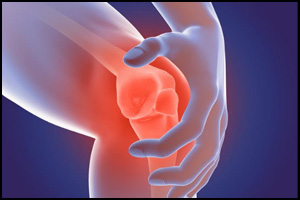- Home
- Editorial
- News
- Practice Guidelines
- Anesthesiology Guidelines
- Cancer Guidelines
- Cardiac Sciences Guidelines
- Critical Care Guidelines
- Dentistry Guidelines
- Dermatology Guidelines
- Diabetes and Endo Guidelines
- Diagnostics Guidelines
- ENT Guidelines
- Featured Practice Guidelines
- Gastroenterology Guidelines
- Geriatrics Guidelines
- Medicine Guidelines
- Nephrology Guidelines
- Neurosciences Guidelines
- Obs and Gynae Guidelines
- Ophthalmology Guidelines
- Orthopaedics Guidelines
- Paediatrics Guidelines
- Psychiatry Guidelines
- Pulmonology Guidelines
- Radiology Guidelines
- Surgery Guidelines
- Urology Guidelines
Exercise decreases inflammation and prevents cartilage damage in osteoarthritis

Exercise decreases inflammation and prevents cartilage damage in osteoarthritis.
The researchers have shown for the first time how mechanical forces experienced by cells in joints during exercise prevent cartilage degradation by suppressing the action of inflammatory molecules which cause osteoarthritis.
The study has demonstrated the benefits of exercise on the tissues that form our joints and how this is down to tiny hair-like structures called primary cilia found on living cells.The study has been published in the journal Osteoarthritis and Cartilage.
Osteoarthritis(OA) is a degenerative joint disease and a leading cause of adult disability. The etiology of OA is not clear, but common risk factors for developing OA include age, joint injury, mechanical overuse, and obesity.
The researchers show that this anti-inflammatory effect of physical activity is caused by the activation of a particular protein, called HDAC6, which triggers changes in the proteins that form primary cilia.
Pharmaceutical drugs that blocked HDAC6 activation prevented the anti-inflammatory effects of physical activity, whilst other drug treatments were able to mimic the benefits of exercise.
Changes in length of the primary cilia, which are only a few 1000th of a millimetre, provided a biomarker of the level of inflammation. Cilia got longer during inflammation, but treatments that prevented this elongation successfully prevented inflammation.
Exercise is good for you
Mr Su Fu, PhD student at Queen Mary's School of Engineering and Materials Science and study author, said: “We have known for some time that healthy exercise is good for you - now we know the process through which exercise prevents cartilage degradation.”
Professor Martin Knight, lead researcher of the study and also from Queen Mary, added: “These findings may also explain the anti-inflammatory effects of normal blood flow in arteries which is important for preventing arterial disease such as atherosclerosis and aneurism.”
The researchers hope that these findings will help in the search for treatments for arthritis which affects over three million people in the UK causing stiff and painful joints.
The researchers suggest the results may lead to a whole new therapeutic approach known as mechano-medicine in which drugs simulate the effect of mechanical forces to prevent the damaging effects of inflammation and treat conditions such as arthritis.

Disclaimer: This site is primarily intended for healthcare professionals. Any content/information on this website does not replace the advice of medical and/or health professionals and should not be construed as medical/diagnostic advice/endorsement or prescription. Use of this site is subject to our terms of use, privacy policy, advertisement policy. © 2020 Minerva Medical Treatment Pvt Ltd